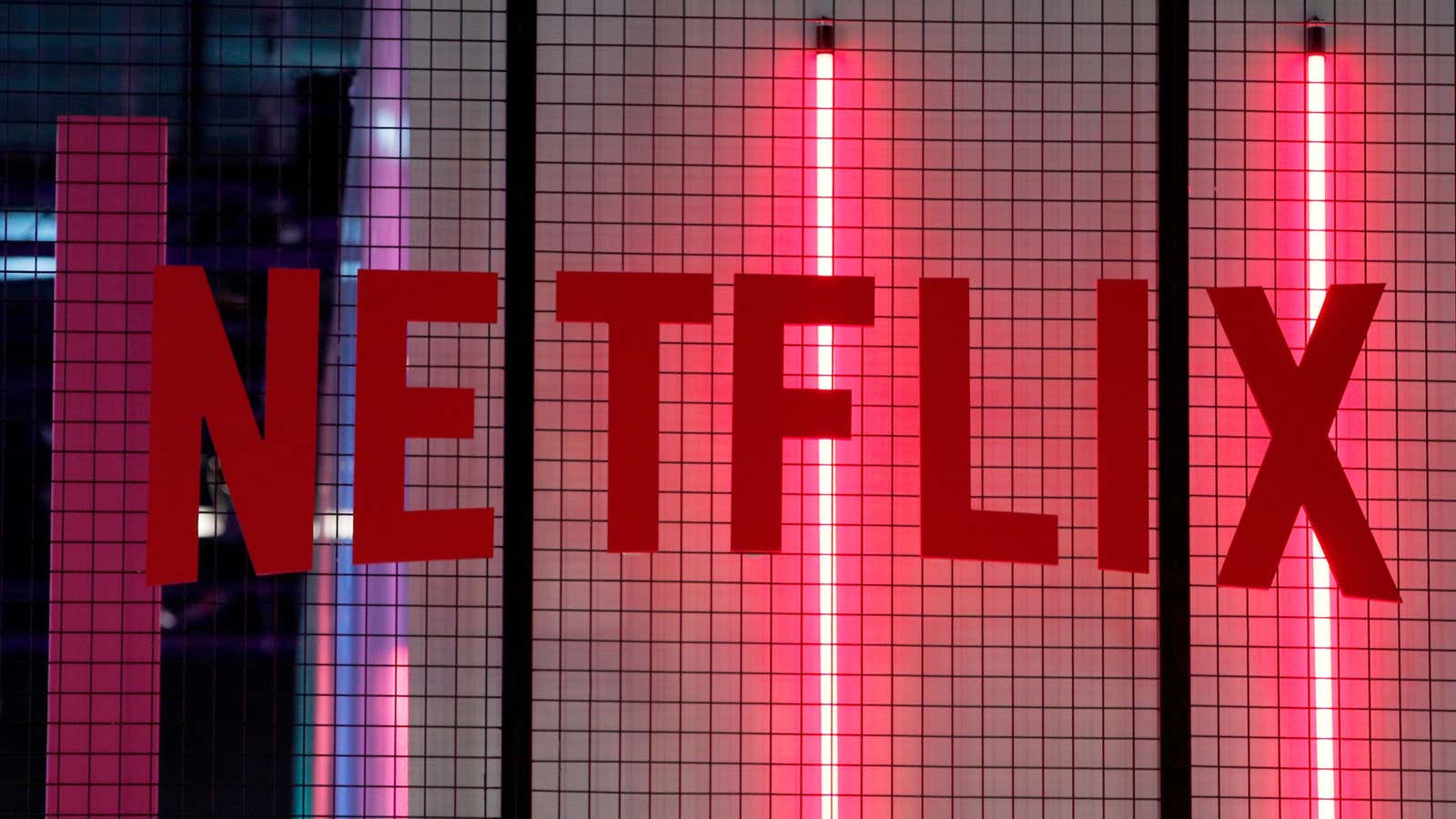Netflix’s newest US price hike could be bad news for its competitors.
At $9 to $16 per month in the US, Netflix is still a bargain, considering the amount and quality of the content it’s putting out each month, analysts say. A few extra bucks a month won’t drive most people away, as long as consumers are consistently finding movies like Bird Box and series like Stranger Things that they want to watch. Last year, Netflix added nearly 1,500 hours of original programming in the US, Quartz estimated.
The streaming-video giant, which boasts 139 million paying members globally, raised prices in the US this month, primarily so it could continue investing more in original programming and new technology, like the choose-your-own-adventure format showcased in Black Mirror‘s “Bandersnatch.”
“Consumers have more stomach for the price of Netflix changing because of what is provided,” Brice Clinton, senior engineer at media software and services firm CSG told Quartz. “That price hike is really being used to create more original programming, and invest in larger shows… versus just putting money in shareholder’s pockets.”
The timing was also telling. Later this year, media heavyweights like Disney and WarnerMedia will be launching new subscription-video services in the US. Netflix got in ahead of those services, grabbing a larger share consumers’s wallets. The price increase could also make people rethink how much they’re willing to spend on Netflix’s competitors each month, experts say.
On average, people in the US are willing to pay around $38 per month for subscription streaming-video services, consumer research firm Magid found in a 2018 survey. After the $13 per month Netflix’s standard plan now costs, that leaves around $25 for other streaming services, like HBO Now ($15), Hulu ($8), or ESPN+ ($5). Netflix’s lift could make people reevaluate what subscriptions they truly value. When new platforms like Disney+ and WarnerMedia’s service hit the market, people will also have to ask themselves whether they’re willing to give up another platform or dig deeper into their pockets each month.
“By raising their monthly fee, Netflix has just taken a larger share of the total notional spend, arguably putting greater pressure on others to claim and hold onto their share of what remains,” Mike Bloxham, senior vice president of global media and entertainment at Magid, said in a statement to Quartz. “It’s possible that the ripple effect of Netflix increasing its fees will be that some consumers end their subscriptions to other services.”
Amazon is probably the company least at risk, because it’s more than just a video subscription. Many people subscribe to Amazon Prime for free shipping, shopping discounts, and other exclusive Prime perks besides video. But other platforms, and upcoming entrants like WarnerMedia’s tiered-service, which launches later this year, may be forced to reconsider what they can charge for their platforms. Disney has already said it plans to charge less for Disney+ than Netflix does, as it will launch with a smaller library focused on Disney brands like Marvel, Star Wars, and Pixar.
Want a better understanding Netflix and other streaming giants? Check out our guide to the streaming-TV wars.
